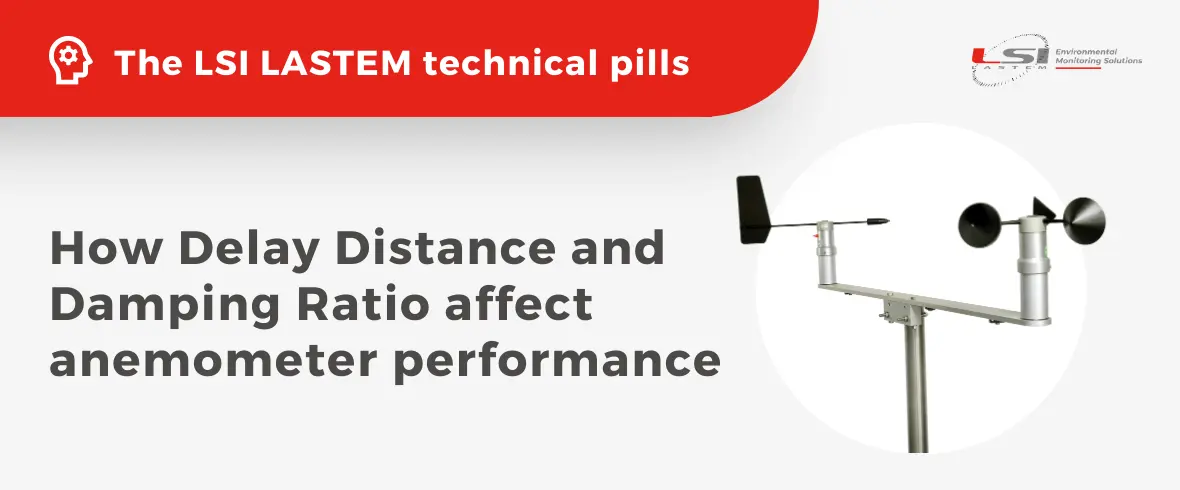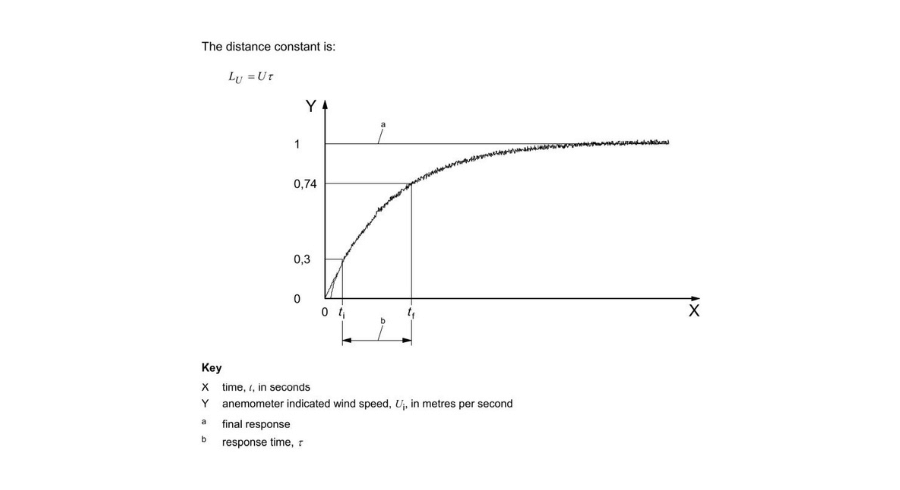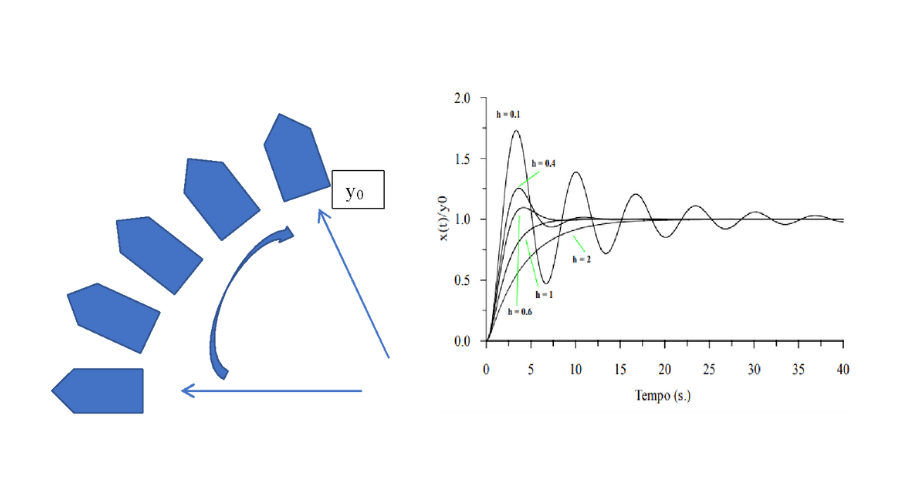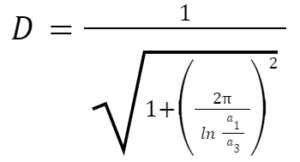During a change in wind speed, any anemometer does not immediately detect the change because, as in any measurement process, there is a certain delay due to inertia.
The Delay Distance is a parameter to quantify the inertia of the instrument in responding to changes in wind speed and indicates the length (in metres) travelled by a volume of wind, after a sudden change in speed, in a time equal to 63% (or a time constant τ) of the total time needed to reach the new speed.
The Delay Distance is a parameter that allows you to quantify the inertia of the instrument in responding to the variation in wind speed.
It is calculated by multiplying the wind speed by a specific time constant, obtained by considering the time interval between the moment in which 30% of the new wind speed is measured and 74% of it. This procedure is detailed in Figure 1.




